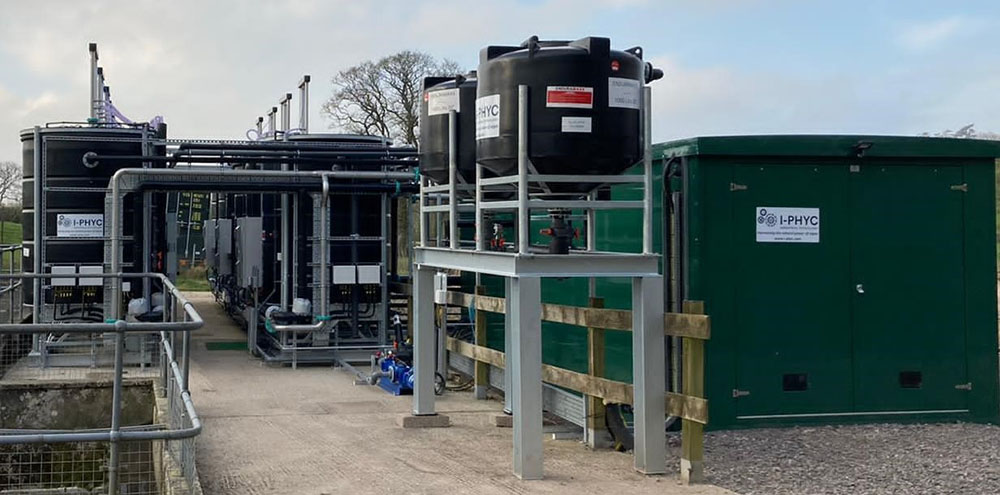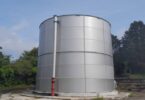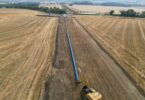Exclusive interview: H2O Global News Editor Sion Geschwindt spoke with Industrial Phycology Business Development Manager, Andrew Best, about the company’s unique approach to waste water treatment.
Whether its toxic cyanobacteria outbreaks or mass eutrophication of our waterways, algae have been getting a lot of bad press lately.
These three-billion-year-old photosynthetic microorganisms often pose such a problem because – given the right amount of sunlight and nutrients – they can multiply rapidly, leaving little left for other aquatic life.
With the sheer quantity of excess nitrates and phosphates (think ‘algae food’) spilling into our waterways each year, it’s no surprise that algal blooms have become such an issue globally.
But under the right conditions algae’s insatiable appetite for nutrients can render them surprisingly useful.
Green power
Treatment plants process waste water in two main phases: the first tackles organic and inorganic solids (the ‘tough stuff’) and the second removes dissolved particles. The result is a clear effluent safe to discharge into waterways.
However, while this water might appear clean it is often loaded with access nitrates and phosphates that can cause eutrophication and other water quality issues down the line.
One solution is to introduce a third phase: tertiary water treatment using microalgae.
According to research, microalgae cultures offer an elegant solution to tertiary and quandary treatments due to their ability to absorb inorganic nitrogen, phosphorus and even toxic heavy metals for their growth.
What’s more, once the algae have done their job they can be used as biomass to produce bioplastics, fertilisers, and even food supplements.
Industrial Phycology Business Development Manager, Andrew Best, explains: “Most traditional tertiary water treatment methods use chemicals.
“Algae are such a great alternative because they are natural, absorb a range of contaminants and can also fight climate change.
“As they grow, they absorb huge amounts of Co2 and breath out oxygen making them carbon positive – which is a win-win whichever way you look at it.”
Industrial Phycology – or I-Phyc for short – is a Bristol-based start-up that has developed an Algal Bioreactor (ABR) to mainstream the use of algae in tertiary water treatment.
How does it work?

I-Phyc system installed at waste water treatment works Broadwindsor, West Dorset, UK
ABRs create optimal conditions for the growth of specific algae by combining sunlight, carbon dioxide and waste water, under controlled conditions.
“We utilise a wide number of species of common, naturally occurring algae, that are found in most watercourses,” said Best. “A diverse range of algae gives greater flexibility to the technology and its ability to quickly remove multiple nutrients and contaminants in a single process.”
Within the I-Phyc’s bioreactor, microalgae are added to the effluent at a set proportion depending on the nutrient load.
The algae / effluent mixture is mixed using coarse bubble air diffusers and passed through a series of tanks that are internally lit with LED lamps. At this point algae will absorb CO2 and “exhale” oxygen contributing to reducing the carbon footprint of wastewater treatment.
The algae have been pre-conditioned to uptake nutrients as rapidly as possible.
Treatment typically takes 6 to 8 hours depending on incoming loads and the effluent is discharged from the works to the watercourse.
What’s left behind is a thick soap of algae that can be used as biomass or reused to treat the next batch of effluent.
A carbon solution?
Across the UK, the water industry has committed to net-zero by 2030 – a righteous but ambitious goal.
Achieving carbon neutrality will require rapid step changes in the way that energy-intensive waste water treatment plants operate.
“Phosphorous removal is essential but a serious contributor to the industry’s carbon footprint,” said I-Phyc CEO, Russel Bright, to the Drain Trader. “Ferric sulphate dosing is the traditional approach but it comes with a large carbon cost.”
I-Phyc back their solution to give utilities an alternative.
“Our algae-based bio-P removal system can sequester 17 tonnes of CO2 per year at a 1000-person equivalent treatment plant,” said Bright. “If scaled up to just 25% of the UK population that is 1.5m tonnes of carbon drawn from the atmosphere in a single year.”
If scaled up the algal byproducts could be utilised as a more sustainable alternative to fossil fuel-based plastics, further cutting emissions.
A paradigm shift
According to the International Water Association (IWA), a paradigm shift in the past few years has led to a new appreciation of wastewater, not as a problem but as a source of energy and other valuable resources.
The IWA back algae-based technologies as great options for treating wastewater and generating useful products with low cost and high efficiency, but encourage further research in order to expand the application of these alternatives worldwide and enhance current systems.
“The fear of using something new can be a challenge in the industry,” said Best. “The upfront cost can be an issue but once the initial outlay is spent then this is a much cheaper system to keep running, and if there are issues with ammonia contamination the utility doesn’t have to purchase an additional system.”
Bright concluded: “With I-Phyc, achieving net-zero and beyond is more than possible for the wastewater industry – if they are willing to take the leap.”
Do you have an article or video that you would like to share? Submit your article here or keep up with the latest news from the water industry and wastewater industry by subscribing to our weekly newsletter.








[…] Green power: Harnessing algae to clean water and fight climate change […]